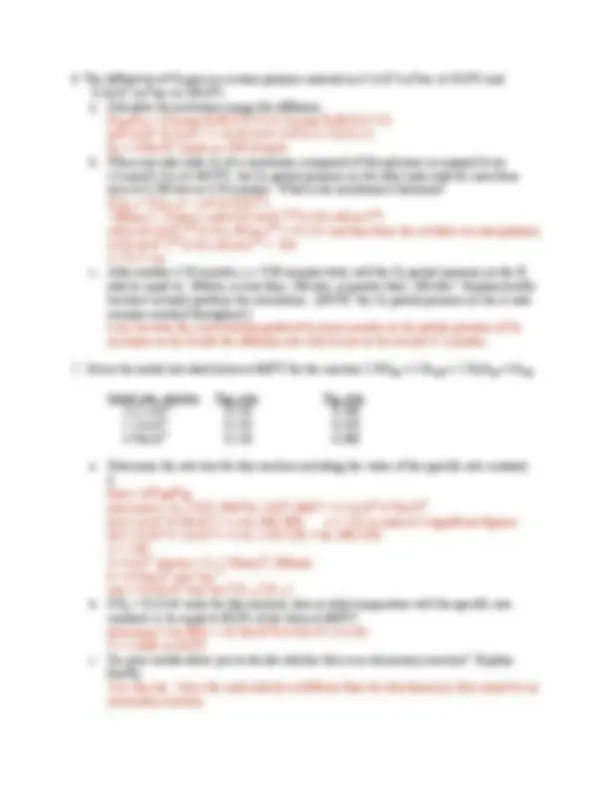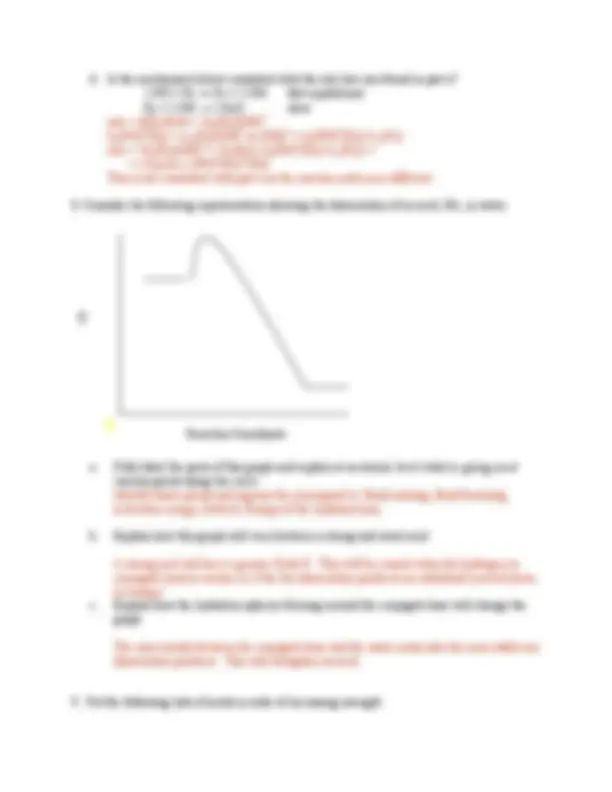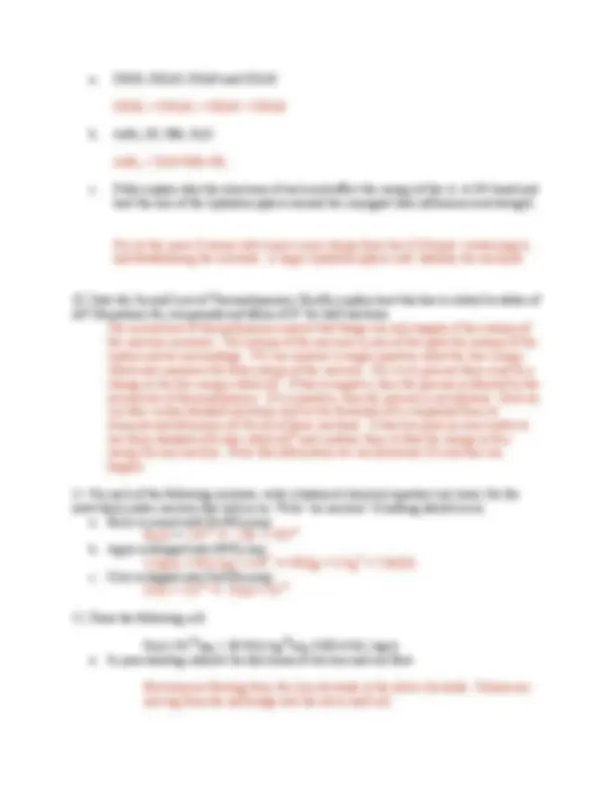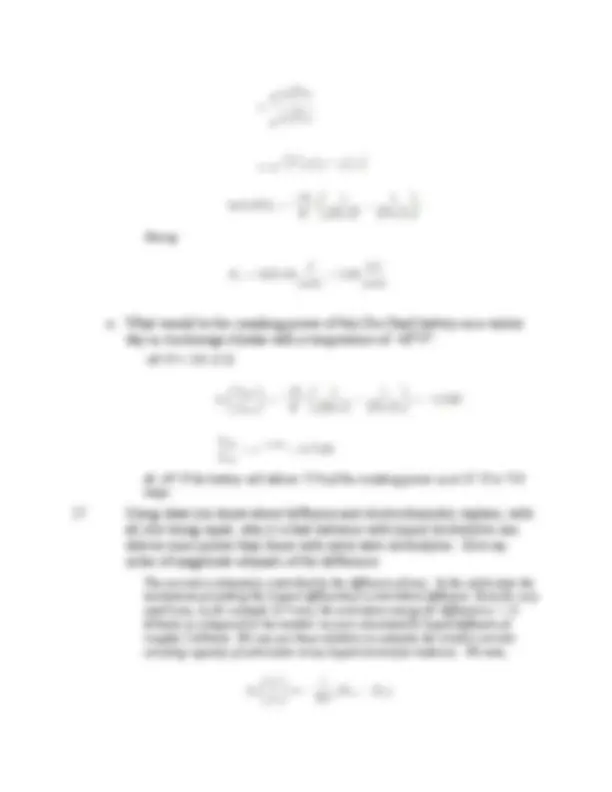







Study with the several resources on Docsity

Earn points by helping other students or get them with a premium plan


Prepare for your exams
Study with the several resources on Docsity

Earn points to download
Earn points by helping other students or get them with a premium plan
Community
Ask the community for help and clear up your study doubts
Discover the best universities in your country according to Docsity users
Free resources
Download our free guides on studying techniques, anxiety management strategies, and thesis advice from Docsity tutors
Various topics in chemistry including le chatelier's principle, endothermic reactions, chemical equilibrium, acid-base equilibria, and diffusion. It includes calculations and explanations related to these topics.
Typology: Exams
1 / 9

This page cannot be seen from the preview
Don't miss anything!






) causes reaction to go to right c. add AgNO 3 Ag
, causing reaction to go to left d. add a catalyst Catalysts do not change equilibrium concentration e. increase temperature Endothermic reaction will go to right when temp. is increased
d. Is the mechanism below consistent with the rate law you found in part a? 2 NO + H 2 ⇔ N 2 + 2 OH fast equilibrium H 2 + 2 OH → 2 H 2 O slow rate = d[H 2 O]/dt = 2k 2 [H 2 ][OH]^2 k 1 [NO]^2 [H 2 ] = k-1[N 2 ][OH]^2 so [OH]^2 = k 1 [NO]^2 [H 2 ]/ k-1[N 2 ] rate = 2k 2 [H 2 ][OH]^2 = 2k 2 [H 2 ]( k 1 [NO]^2 [H 2 ]/ k-1[N 2 ]) = = (2k 1 k 2 /k-1) [NO] 2 [H 2 ] 2 /[N 2 ] This is not consistent with part a as the reaction orders are different.
a. ClOH, ClO 2 H, ClO 3 H and ClO 4 H ClOH, < ClO 2 H, < ClO 3 H < ClO 4 H b. AsH 3 , HI, HBr, H 2 O AsH 3 , < H 2 O<HBr<HI, c. Fully explain why the structures of each acid affect the energy of the A- to H+ bond and how the size of the hydration sphere around the conjugate base influences acid strength For (a) the more O atoms will remove more charge from the O-H bond—weakening it, and destabilizing the reactants. A larger hydration sphere will stabilize the reactants.
2-
substituting into the above equilibrium expression gives, rearranging we have,
o
o
The current is proportional to the rate of the chemical reaction producing the power. The rate-determining step for this reaction in the lead acid battery is the diffusion of ions through the electrolyte. As with all reactions, temperature will have an affects. At lower temperatures diffusion will occur more slowly and hence the number of amps produced will also decrease
0 o^ F = 255.37 K, 32o^ F = 273.15 K
Giving
o
-40o^ F = 233.15 K At - o F the battery will deliver 72% of the cranking power as at 32 o F or 720 amps.
The current is ultimately controlled by the diffusion of ions. In the solid-state the mechanism providing the largest diffusivities is interstitial diffusion. Even for very small ions, as for example Li+ ions, the activation energy for diffusion is ~ 15 kJ/mole as compared to the number we just calculated for liquid diffusion of roughly 5 kJ/mole. We can use these numbers to estimate the relative current carrying capacity of solid state versus liquid electrolyte batteries. We note,